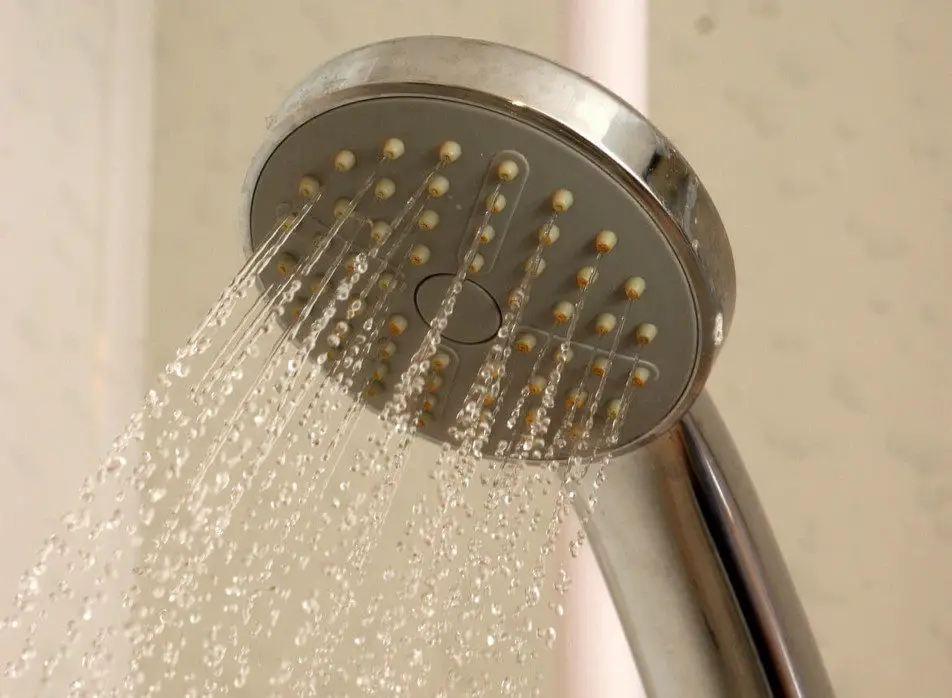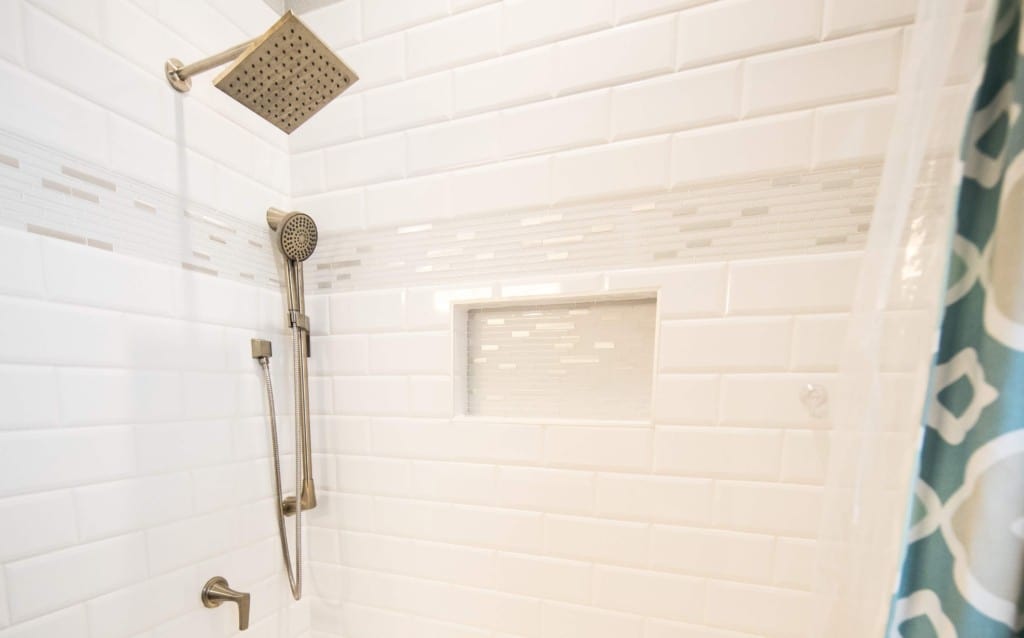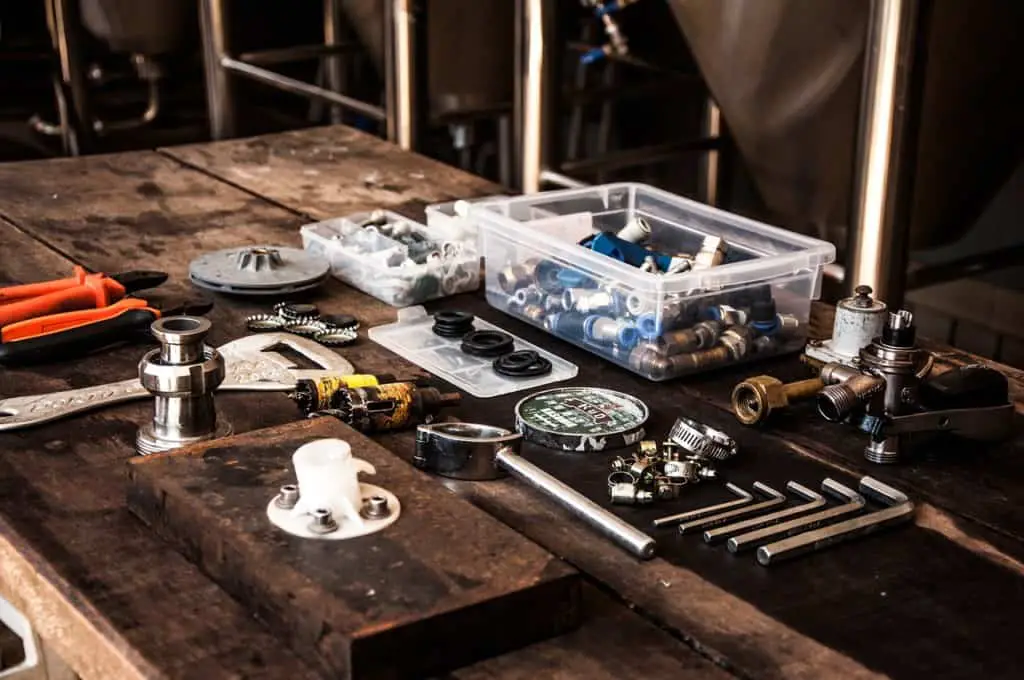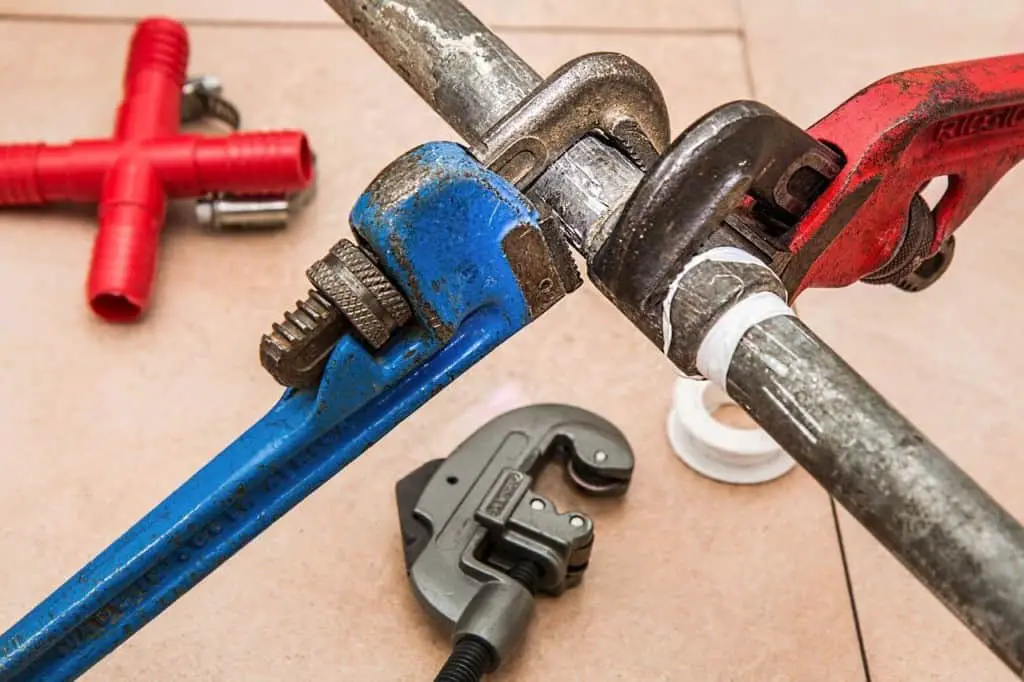
If you’re looking to get a new showerhead, you might naturally be wondering if any showerhead will fit your shower arm—that pipe in your wall that connects your showerhead to your water supply. The good news is that for most homes, there is a straightforward answer:
Showerheads have a universal thread size in the United States and Canada, which is designated as ½-inch NPT. As a result, any locally sold showerhead should be compatible with your shower arm. The exceptions to this rule are showerheads sold in other countries, unconventional showerhead designs, or very old homes.
There’s so much more involved in selecting the right showerhead. To make sure that you don’t end up spending hours scouring the Internet or running back and forth from the hardware store, check out the details and tips I’ve compiled below to help you successfully choose a compatible showerhead.
Table of Contents
Are Showerheads Universal?

The standard size for showerheads in the US and Canada is ½-inch NPT. If your shower head is from the last forty years or so, you probably have a standard shower head.
However, there are exceptions to that standard that should be kept in mind when replacing a showerhead.
The three exceptions are showerhead sizes from different countries, unconventional showerheads, and very old showerheads.
1. Showerhead Sizes In Other Countries
If you’re purchasing online and find an amazing showerhead made in another country, be sure to look closely at the specs. In the US and Canada, the standard thread size is 1/2-inch NPT. The “NPT” stands for National Pipe Thread Tapered.
On the other hand, most countries around the world use a different pipe thread standard—BSP, which is an abbreviation for British Standard Pipe, and you’ll likely find it in Asia, Australia, Europe, New Zealand, and South Africa. A common showerhead thread size in these places is 1/2-inch BSP.
2. Unconventional Showerheads
In most cases, you’ll probably only find showerheads with the standard ½-inch NPT. However, you might come across some unconventional shower rigs that you’ll want to avoid.
And unless you plan on doing some remodeling and making major changes to your plumbing, then you’ll want to avoid this type of hardware.
For example, rainfall showerheads, designed to imitate falling rain, sometimes have a ceiling installation. If you have a wall-mounted shower arm, like most people do, a rainfall showerhead might be too large (the head itself, not the pipe threading).
While there are smaller rainfall showerheads that might work on the wall, you’ll have to consider the angle of the shower arm to get the rain effect you want.
3. Very Old Homes
While it is currently the standard to install pipes to fit a 1/2-inch NPT showerhead, that hasn’t always been the case. If you live in an older home, you might find that your showerhead is not compatible with the existing shower arm.
If you run into that problem, you might want to replace the shower arm or find an adapter if you don’t want to mess with anything in the shower walls.
One common problem that I’ve seen online is that some old homes have a ball end shower arm, which used to be made by only a few companies, such as Price Pfister, Gerber Ball, and American Standard.
Because it’s so old, you probably won’t be able to find any adapters in local stores, but there are adapters available online if you do a quick search for ball end shower arm adapters.
Hopefully you won’t fall into any of these showerhead sizing exceptions, but to be sure, let’s cover a few ways you can make sure you’re getting a showerhead that will fit your shower.
Tips for Checking the Showerhead Fit

As you prepare to dive into all your showerhead options, you’ll need to have a good way to double check that it’s going to fit your shower arm. That’s what we’ll cover here.
Tip #1: Take Your Old Showerhead With You to the Store
If you’re like me, you may stare at your shower arm and not have a clue as to whether it’s the standard size. In that case, it’ll save you a lot of time by simply removing and bringing your existing showerhead to the store.
If you don’t have the existing showerhead available, you can also remove the shower arm and bring it. That way, you can get help or test whether it’s compatible before having to make the trek home to try it out.
Tip #2: Measure Your Shower Arm
If you live out in the middle of nowhere, buy everything online, or you’re not able to bring the existing parts to the store for whatever reason, you can double-check the threads of your shower arm by measuring it.
Male or Female Threads
First of all, take note as to whether your shower arm has male or female threads. Are the threads on the outside or the inside of the fitting? If your threads are on the outside, it has male threads. If they’re on the inside, it has female threads.
Male and female connect to one another, so if your shower arm has male threads, which is common, you’ll need to get a showerhead with a connector that has female threads and vice versa.
Tapered or Parallel
Next, you’ll want to see if your threads are tapered or parallel. If it’s tapered, the diameter will decrease along the threads. If it’s parallel, the threads maintain a consistent diameter. You should be able to tell by simply looking at it.
If you’re in the US or Canada, chances are that it’s tapered, but you’ll want to double-check and make sure that your connecting part matches since a tapered male part will connect with a tapered female part.
Inner and Outer Diameter
Now measure the diameter. For male threads, you’ll want to measure the outside diameter. For female threads, you’ll want to measure the inside diameter. These are often designated by “I.D.” for inner diameter and “O.D.” for outer diameter.
You’ll then want to take that actual measurement and compare it on a thread chart to find the nominal size or trade size. This nominal size (or trade size) is a standard naming convention to help identify parts.
These are the key measurements to take note of as you’re shopping for showerheads. I know, it seems like a bit much. Don’t be afraid to ask for help and clarification at the store.
If you need further measurements, here’s a handy guide for determining pipe thread type and pipe size.
Tip #3: Ask a Friend/Ask for Help
If I had a plumbing-related question, I would have no hesitations in asking for help, I would probably call my dad.
But if he wasn’t available, the employees of local or even large hardware stores are very knowledgable. If you have a question about what parts you might need, they would be happy to help you out.
If you are one of those lucky people who happens to have a friend or family member who is a plumber or someone who just knows a lot about plumbing, why not ask for some advice. It may end up saving you a lot of time and effort.
Tip #4: Buy a Few Different Showerheads and Return the Ones That Don’t Work
To ensure that I get the correct sized showerhead, I personally would do any one of the tips above before resorting to this one.
If you don’t have the tools to measure, an expert to ask, and can’t get your current parts to the store, you can always buy several showerheads with different types of connections and sizes.
Try to connect them all to your shower arm and see what fits. I would be careful to make sure it appropriately fits without having to force it as some might be close in size but have different threads. You definitely don’t want your showerhead to leak!
Then, once you have the shower head that fits, take the others back to the store.
How to Replace a Shower Head

All that trouble to get a new shower head, you probably want to know how to replace it. So, here’s how to replace your old shower head with a new one.
Materials Needed
In addition to a new showerhead, you might also need the following items to finish the job:
- An adjustable wrench or pliers to remove the old head and install the new one
- A rag to pad the inside of your wrench, to prevent damage to the pipe or showerhead
- Teflon tape, also called thread seal tape, (included with most new showerheads) to seal the connection
1. Remove the Old Showerhead
First things first, you need to remove the old shower head from the fixture. Before you try to remove your showerhead, make sure there’s as little water in the pipes as possible so you don’t get soaked.
To do this, make sure the shower isn’t on and switch the tub spout diverter to the bath output. Tub spoud diverter is a fancy term for the lever or pin on top of your tub faucet that switches the water flow from the tub spout to the shower head.
By switching the regulator you will drain all the water out of the shower arm. If your shower doesn’t have a tub, then it should already be drained as much as it can be.
Try to remove the shower head by hand first by twisting counter clockwise, lefty loosey righty tighty. If you’re unable to do it with hand strength, take your wrench and rag and use them to unscrew your shower head.
2. Prep the Shower Arm
Before you attach the new head, there are a couple things you need to do. First, remove the old teflon tape from the shower arm.
Then check the thread to see if they’re in good condition. If they’re rusty or have any mineral deposits, give them a good scrub so the threads can seal properly.
Dry off the threads and wrap on the teflon tape. Start with one layer of teflon tape, if it overlaps that’s just fine.
Now you’re ready to install the new shower head.
3. Install the New Showerhead
One last thing before you install the replacement showerhead, if you want to install a shower head filter, this is when you want to do it.
Most shower filters are blocks that go between the shower arm and shower head. Attach your filter according to the manufacturers instructions.
Finally, attach your shower head to the shower arm. Tighten first with your fingers by turning it in a clockwise direction and then finish tightening by using the wrench and rag combo.
Lastly, turn on the water and check for leaks around the shower head to shower arm connection. If there are leaks, remove the showerhead and add more teflon tape. Continue this until there are no more leaks.
And there you have it, that’s how to replace a shower head.
Are Shower Hoses Universal?
Shower hoses are only present in hand held shower heads or dual shower heads that can be moved around in the shower.
Replacing this flexible hose can be just as important as replacing your shower head. And, just like showerheads, shower hoses do have a universal size.
The standard thread size of shower hoses is 1/2″ with the standard length being 60″. Although the thread size is standard.
You’ll want to make sure the new shower hose has the same cone shape and style on the end of the hose as the old shower hose.
Related Questions
Can you change the showerhead in a rental?
You can usually change the showerhead in a rental, as long as there are no clauses in your lease regarding plumbing and fixtures. It would be wise to double-check with your landlord and get it in writing. If you do end up changing the showerhead, be sure to keep the old one in good condition, so when you move out, you can put it back in place in the same condition. Check out our other post for more details.
Do you have to turn off the water to change your showerhead?
No, you don’t have to turn off the water to the building in order to change your showerhead. However, you should definitely turn off the shower faucet to avoid getting soaked in water when you change your showerhead.
Are toilet seats sizes universal?
There are two standard sizes of toilet seats in the United States. They are elongated and round. Elongated toilet seats are 18.5 inches long and round toilet seats are 16.5 inches long. To find out what kind of toilet seat you need, measure from the end of the bowl to the middle of the seat post holes
What are the different types of shower heads?
There are 12 main types of different shower heads. They are standard fixed shower head, handheld shower head, rainfall shower head, dual shower head, filtered shower head, massage shower head, high pressure shower head, low flow shower head, shower panels, LED shower head, RV/Camper shower head, navy shower head. For a detailed description of each one, check out our other post here.

